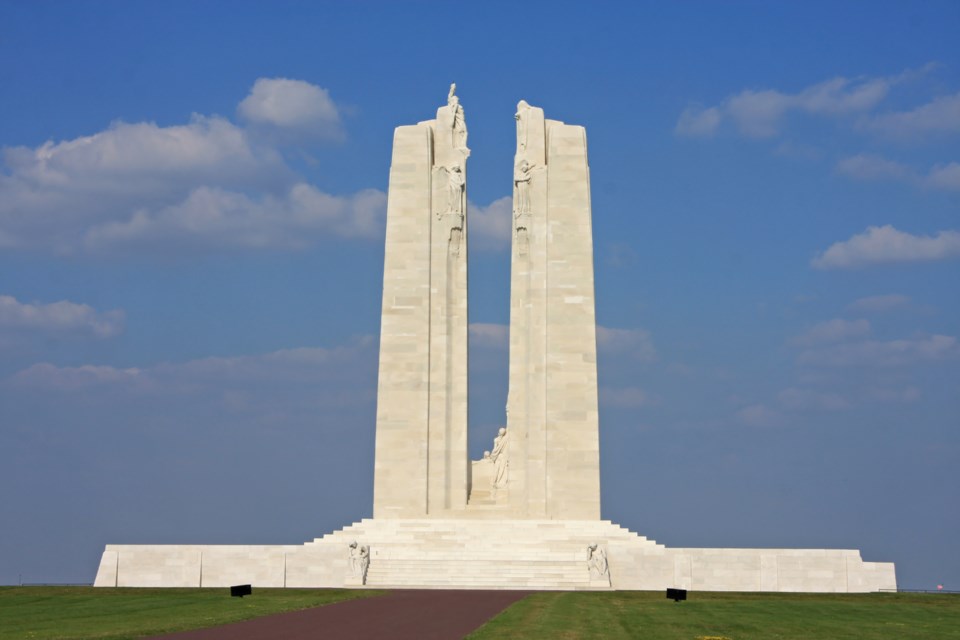Moose Jaw brothers George and Norman McClelland were likely eager to display their patriotism when they enlisted in the army during the First World War, but neither would ever see Canada again.
George Reginald McClelland was born on April 15, 1893, while his brother Norman Leslie McClelland was born three years later on Oct. 15, 1896, sons of Mary E. and James McClelland.
They enlisted in either late 1914 or sometime in 1915 and, after training, eventually ended up in France. They were attached to the 16th Battalion (Manitoba Infantry Regiment). George was a corporal and Norman was a private.
The First World War had been on for nearly two years when they both met a similar fate in 1916. George died on Sept. 4, 1916, while Norman died on Oct. 8, 1916. Because of the ferocity of the fighting, neither of their bodies were ever found.
So, like 11,285 other Canadians who fought in northeast Europe and have no known grave, the McClelland brothers’ names were inscribed onto the Vimy Ridge monument. The towering monument overlooks the Douai Plain from the ridge’s highest point and is about eight kilometres northeast of Arras.
Information about the brothers came from the Canadian Virtual War Memorial, which catalogues every Canadian who fought and died during the First World War. Sue Knox, a member of Moose Jaw’s Royal Canadian Legion Branch 59, collected the information as part of a project to honour the nearly 500 individuals from the Moose Jaw area who fought and died in both world wars.
The Moose Jaw Express/MooseJawToday.com plans to run several stories highlighting these individuals using this information.
Buried at home
Pte. Joseph Kenna was born on May 1, 1871, and was the husband of Margaret Ann Conception Kenna and the youngest brother of the late Brig.-Gen. Paula Kenna, CDSO, ADC. Paula had a lengthy career in the military after the First World War.
CdSO stands for Commissioned Stores Officer while ADC stands for air defence centre.
Kenna served in the Canadian Forestry Corps during the war and had the service number 2188488. The war had ended by Nov. 11, 1918, but the private died several weeks later at age 47 on Nov. 25, likely due to an injury sustained while working.
He is buried in the old Moose Jaw Cemetery, with a grave location of L. 8. B. 36. G. 5. Kenna is also the only Moose Jaw soldier of the First World War buried in the community.
Another missing body
Pte. Sydney Lambert Woodrow was born on Aug. 6, 1893, to Mr. and Mrs. Robert Thomas Woodrow of 1040 Henleaze Avenue in Moose Jaw.
Woodrow enlisted in the 28th Battalion (Saskatchewan Infantry Regiment) in either late 1914 or sometime in 1915 and possibly trained at Camp Hughes in Manitoba.
After arriving overseas with his unit, Woodrow later participated in a battle near the French/Belgium border and died on April 7, 1916. Similar to many other soldiers, his body was never found, so his name was inscribed on the Menin Gate Memorial in Ypres, Belgium.
The memorial bears the names of 55,000 men from various Commonwealth countries who were lost without a trace during the defence of the Ypres Salient throughout the war.
Menin Gate opened in 1927, and every night at 8 p.m. since that time — aside from a couple of years during the Second World War and during the recent pandemic — a “Last Post” ceremony is held. All traffic through the gateway is halted and two buglers stand in the centre and sound the Last Post using silver trumpets that a Canadian officer donated in 1915.




